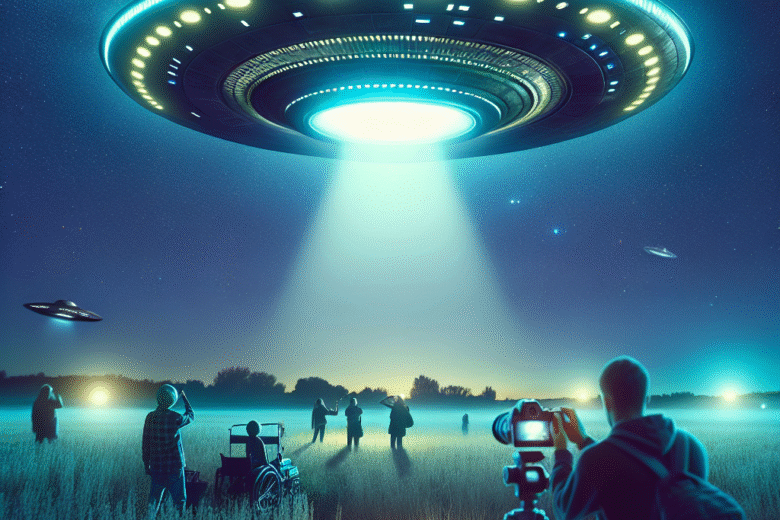Documenting UFO Sightings: Best Practices and Tools
For centuries, humans have gazed into the night sky, captivated by the mysteries that dwell beyond our planet. Among these mysteries, unidentified flying objects (UFOs) have sparked curiosity, debate, and intrigue. Whether you’re a seasoned UFO enthusiast or a curious newcomer, documenting these sightings with precision and accuracy is crucial. In this blog post, we’ll explore the best practices and tools for documenting UFO sightings effectively.
Table of Contents
1. Introduction to UFO Sightings
2. Best Practices for Documenting UFO Sightings
3. Essential Tools for UFO Documentation
4. Sharing Your UFO Sightings
5. Conclusion
6. FAQs
Introduction to UFO Sightings
UFO sightings have been reported worldwide, igniting imaginations and stirring scientific inquiry. From fleeting lights in the sky to inexplicable aerial maneuvers, each sighting adds a piece to the puzzle. Documenting these events accurately can help build a repository of evidence that may one day unravel the UFO enigma. But where do you start?

Best Practices for Documenting UFO Sightings
Documenting UFO sightings involves more than just jotting down notes. It’s about capturing details that can withstand scrutiny. Here are some best practices to follow:
1. Note the Exact Time and Date
Time and date are critical components of any UFO report. Precise timestamps can help correlate sightings with other reports and even astronomical events.
2. Describe the Location Accurately
Include specific details about where you were during the sighting. GPS coordinates, landmarks, and compass directions can provide context and help others verify your report.
3. Record Weather Conditions
Weather can play a significant role in UFO sightings. Include information about cloud cover, wind speed, temperature, and any other relevant atmospheric conditions.
4. Detail the Appearance and Behavior
Describe the UFO’s shape, size, color, and any distinguishing features. Note its movement, speed, and direction. Did it hover, accelerate, or change direction abruptly?
5. Capture Audio and Visual Evidence
Whenever possible, take photos or videos. Ensure your camera settings are optimized for night photography to capture the best quality images. Audio recordings of any unusual sounds can also be valuable.
Essential Tools for UFO Documentation
In the digital age, numerous tools can assist you in documenting UFO sightings. Here’s a look at some essential resources:
1. Smartphone Apps
Apps like “UFO Tracker” and “UFO Stalker” allow you to record sightings in real-time, complete with GPS data and sharing capabilities. These apps often connect you with a community of enthusiasts and researchers.
2. High-Quality Cameras
A good camera can make all the difference. Invest in one with excellent low-light performance and optical zoom to capture clear images from a distance.
3. Notebooks and Journals
While digital tools are invaluable, a traditional notebook allows for quick jotting of impressions and sketches. Sometimes, the old-fashioned way can spark insights that digital tools may not.
4. Audio Recorders
Small, portable audio recorders can capture any unusual sounds during a sighting. These recordings can be analyzed later for anomalies or patterns.
Sharing Your UFO Sightings
Once you’ve documented a sighting, sharing your findings can contribute to the broader body of UFO research. Here are some ways to share responsibly:
1. Online UFO Databases
Websites like MUFON (Mutual UFO Network) offer platforms for submitting detailed reports. These databases are invaluable for researchers and fellow enthusiasts.
2. Social Media and Forums
Platforms like Reddit, Facebook groups, and specialized forums provide spaces for discussion and analysis. Engage with a community that shares your passion for the unknown. 🌌
3. Local UFO Clubs
Joining a local club can open avenues for collaboration and support. Sharing experiences in person can be both rewarding and reassuring.
Conclusion
Documenting UFO sightings is not only about capturing a moment in time but contributing to a larger quest for understanding. By following best practices and utilizing the right tools, you can ensure that your observations add value to the ongoing exploration of the unknown. Whether you’re a seasoned sky-watcher or a curious newcomer, remember that every sighting is a piece of a larger puzzle. Happy sky-watching! 👽
FAQs
Q1: What should I do if I see a UFO?
A: Stay calm and try to document the sighting as thoroughly as possible. Note the time, location, and any distinguishing features of the UFO.
Q2: Are there specific apps for UFO reporting?
A: Yes, apps like “UFO Tracker” and “UFO Stalker” are designed for documenting and sharing UFO sightings.
Q3: Can weather affect UFO sightings?
A: Absolutely. Weather conditions can influence visibility and may explain certain phenomena, so always include weather details in your report.
Q4: How can I learn more about UFO sightings?
A: Joining local UFO clubs, participating in online forums, and reading reputable books and articles can enhance your understanding and engagement with the UFO community.
With these best practices and tools, you’re now equipped to dive into the fascinating world of UFO documentation. Keep your eyes on the skies! 🌠
Looking for a side hustle
Check out one of the best around atm
